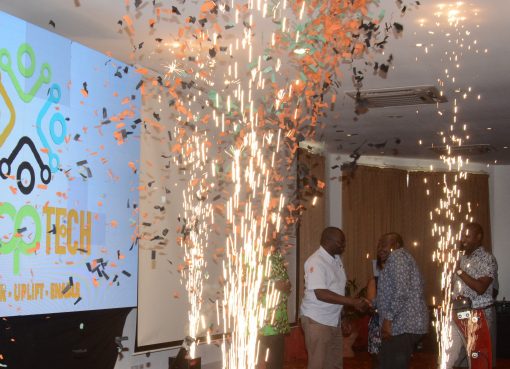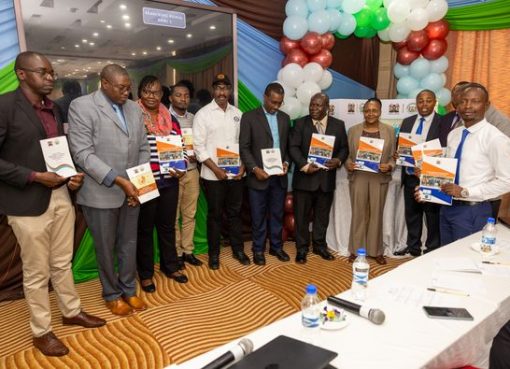Nakuru County government has in the past two years pumped Sh1.6 billion in construction of new markets and refurbishment of existing ones to boost the region’s economic growth.
Governor Lee Kinyanjui said his administration has allocated the funds towards construction of Naivasha Wholesale market (Sh600), ultra-modern market in Nakuru City (Sh600 million) and Naivasha fish market (Sh240 million) among others.
During an inspection tour of Nakuru Top Market and City beautification projects initiated by the devolved unit, Mr Kinyanjui announced that construction of a Sh600 million, three-storey Naivasha Wholesale market that started early last year, was 80 per cent complete.
Outlining his achievements since assuming office in 2017, the Governor indicated that during his tenure Nakuru County allocated Sh700 million to projects aimed at decongesting the Central Business District.
He said construction of the Sh600 million modern market was ongoing at the old fire station in Bondeni, while the second phase involving putting up a Sh100 million modern bus terminus and parking lot for private vehicles at the site was 50 per cent complete.
“We decommissioned the Old Fire Station and its adjoining County slaughter house to create space for these public amenities.
The relocation of these social amenities will decongest the CBD and lead to orderly development and expansion of the town,” said Mr. Kinyanjui.
Apart from decongesting the Top Market and the Wakulima Wholesale and fresh produce market, the ultra-modern market is set to boost fortunes of slum dwellers from the adjacent Bondeni slums and spur economic development in the informal settlements.
The five-storey ultra-modern market, being constructed adjacent to the state-of-the-art bus terminus, will house over 4,000 traders.
He noted that the county has spent Sh50 million to revamp its largest markets and oldest markets-the Top Market and the Wakulima Wholesale and fresh produce market. The markets that were established in 1963 and 1984 respectively, host hundreds of traders.
The Wakulima market currently houses about 7,000 stalls, frequented by over 5,000 people daily, making it the busiest market in Nakuru City. Part of the refurbishment included; modernization of the chicken and fish slaughter houses, renovation of worktops and re-carpeting of the market.
The county government, Mr Kinyanjui observed has also given the Wakulima Market a major facelift at a cost of Sh20 million by restoring its sewerage system, fitting modern roof and toilets among other improvements.
The County has also acquired land at the Gate House roundabout that was previously occupied by a private company and established an ultra-modern Public Service Vehicles (PSV) park.
He stated that the Sh80 million project at the Central Business District to construct telecommunications ducts, aimed at reducing the number of fibre optic cuts, saving millions of shillings lost in repairs and downtime was 90 per cent complete.
Mr Kinyanjui indicated that the ducts which will be shared by all providers and are expected to be ready by next month, will initially be used to lay Closed Circuit Television (CCTV) camera and street light cables that are being installed by the County Government on Kenyatta Avenue, Mburu Gichua and Moi Roads.
The move is set to benefit providers such as Airtel, Safaricom and Telkom Kenya among others that have invested billions of shillings in fibre optic infrastructure and incurred millions in repairs and maintenance.
The utility ducts will enable installation of cables without having to dig up roads within the CBD.
“We are building the ducts so that whenever a new Telco opens shop in Nakuru, it does not have to excavate. They will now only be required to obtain authorisation after making necessary payments, to lay their cables in the utility ducts. In the past such excavations besides causing damage to existing cables have also disrupted movement of people and vehicles,” the Governor pointed out.
The project, he indicated, is in line with the Central government’s National Broadband Strategy which among other things seeks to reduce the cost of doing business by ensuring that operators share infrastructure.
Mr Kinyanjui said the devolved unit was keen in supporting the national government’s efforts to boost the uptake of quality Internet, adding that a growing number of Kenyans had embraced online jobs and e-government services.
“The operators have invested heavily in Nakuru City. The telecommunications ducts are one of the ways through which we will be seeking to protect such investments. In future we will extend the project outside the CBD, especially in those areas that experience high rates of uncontrolled development,” he said.
According to the Governor the projects are part of a wider plan to increase business opportunities and create employment opportunities to dozens of people from the devolved unit.
The County government, he noted was partnering with two development partners-the Eastern Africa Grain Council (EAGC) and The Rockefeller Foundation through its Food Initiative Programme in the country on a Sh240 million fish market to be constructed at Karai area in Naivasha to end the ‘unhealthy’ fish hawking along the busy Nairobi-Nakuru highway as well as revolutionize fish business in the region.
The first phase, according to the county boss, was being constructed at a cost of Sh80 million, with the county contributing at least Sh10 million, with partners giving Sh70 million.
“The project will alter the economic landscape of this area and provide jobs to hundreds of locals who depend on fish farming in the region. It will be a game changer for the youths who have been selling fish by the roadside. They are exposed to dangers of fast moving vehicles and the fish is exposed to irregular temperatures and contamination,” he said.
He stated that his administration had successfully lobbied the National government to construct a modern Sh47 million market at London trading center, within Nakuru West Sub-County with the aim of boosting horticulture farming in the area.
The market, which is expected to handle at least 60 tonnes of fresh vegetables, will complement the Nakuru Top Market and Wakulima market which are located within the Central Business District a kilometer away.
The Governor said the proposed market will be fitted with sections to cater for textiles, cereals and jua kali sheds, which will serve at least 30,000 residents, 4,500 of them being farmers from surrounding areas.
The market which will be the largest in the Sub County will also serve as a wholesale source for bananas, mangoes, avocadoes, potatoes, passion fruits, water melons, sukuma wiki and cabbages which are produced in neighbouring Sub-Counties.
He said the devolved unit was constructing similar markets in other Sub-Counties to boost earnings of rural populations by minimizing exploitation by brokers.
Mr Kinyanjui observed that the new Sh10 million market at Subukia trading center was already operational.
The market, which handles on average 40 tonnes of fresh vegetables, will complement the Kabazi Market 8 kilometers away.
The market is about 22km from Nyahururu Town in Laikipia County, which is a major source of farm produce that is consumed in Subukia Sub-County. Subukia market started operation after more than a decade of wrangles, which had stalled the project.
The developments are meant to spruce up the face of Nakuru and make it a world-class city, said City Manager Gitau Thabanja.
“We have embarked on construction works to improve the drainage, revamp the road infrastructure, introduce pedestrian walkways, streamline garbage disposal, address the housing challenge, street lighting, traffic jams, introduce eco-friendly amenities among other things key to city status,” Mr. Thabanja said.
The elevation of Nakuru to a city, he noted means residents must get better services through improvement in the planning of the town, streamlined garbage disposal, addressing the housing challenge, street lighting, roads and infrastructure, and traffic jams, among other things.
Governor Kinyanjui said his administration, with development partners including the World Bank, have also kicked off plans to upgrade the town’s slums.
“We laud the World Bank for the programme, which will have a major transformative impact on informal settlements,” he said.
The initiative, besides slum upgrading, will also target improvement of drainage infrastructure, waste management, improvement of roads in the slums and installation of lights.
The targeted slums include Kaptembwo, the largest in the city with more than 100,000 residents. Others are Kivumbini, Lake View, Kwa Rhonda, Flamingo, Kaloleni and Bondeni.
By Jane Ngugi and Agatha Agutu





